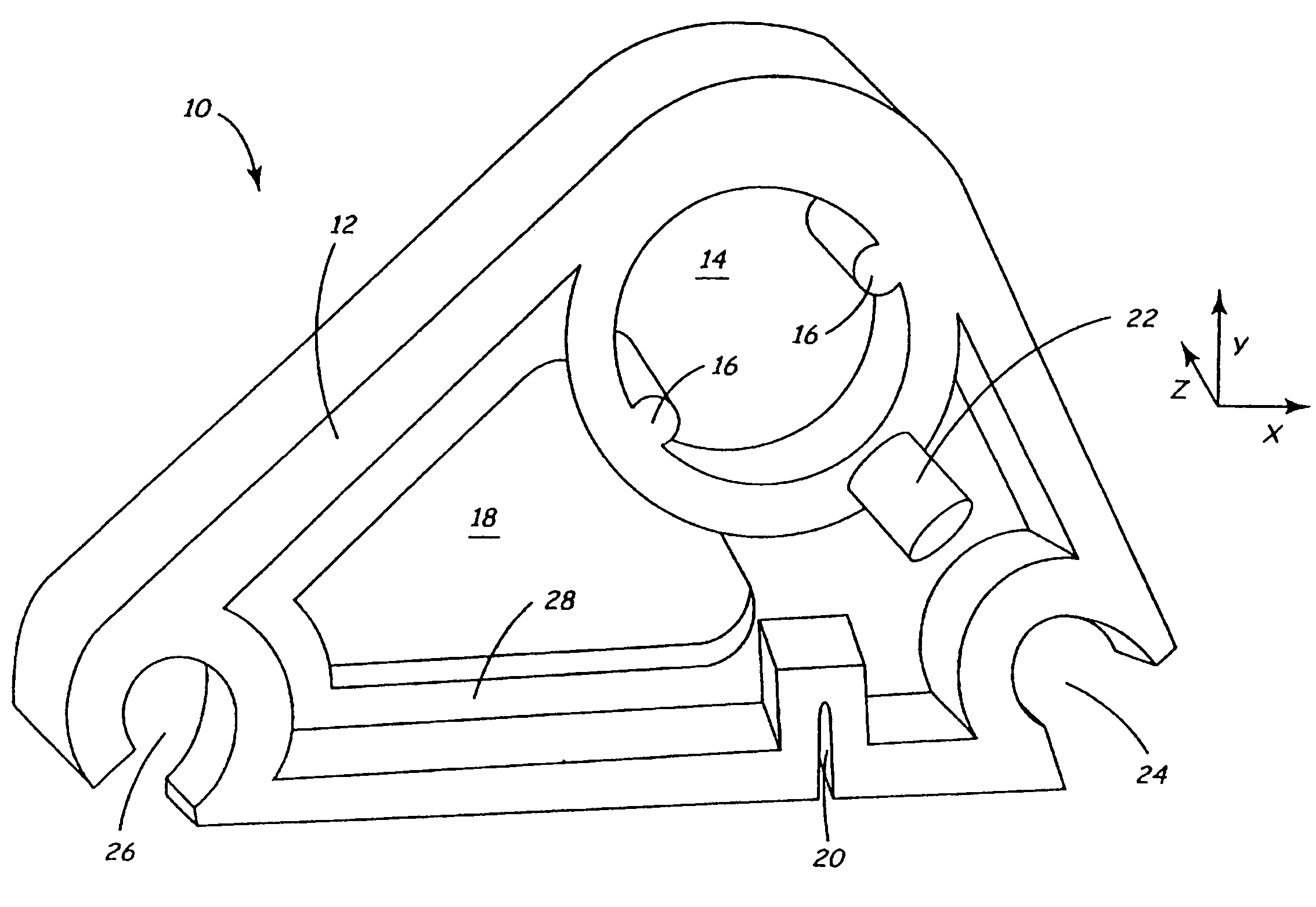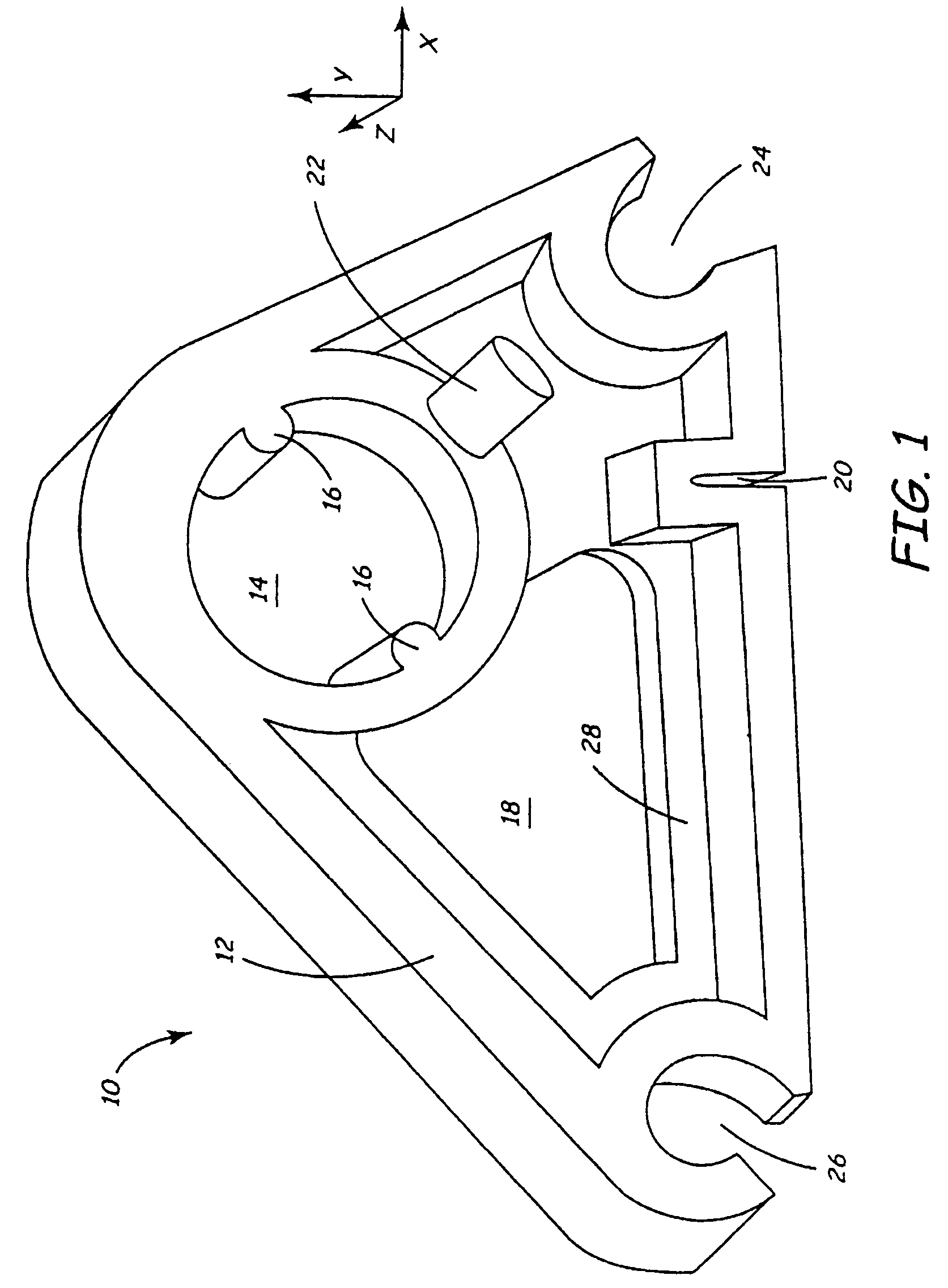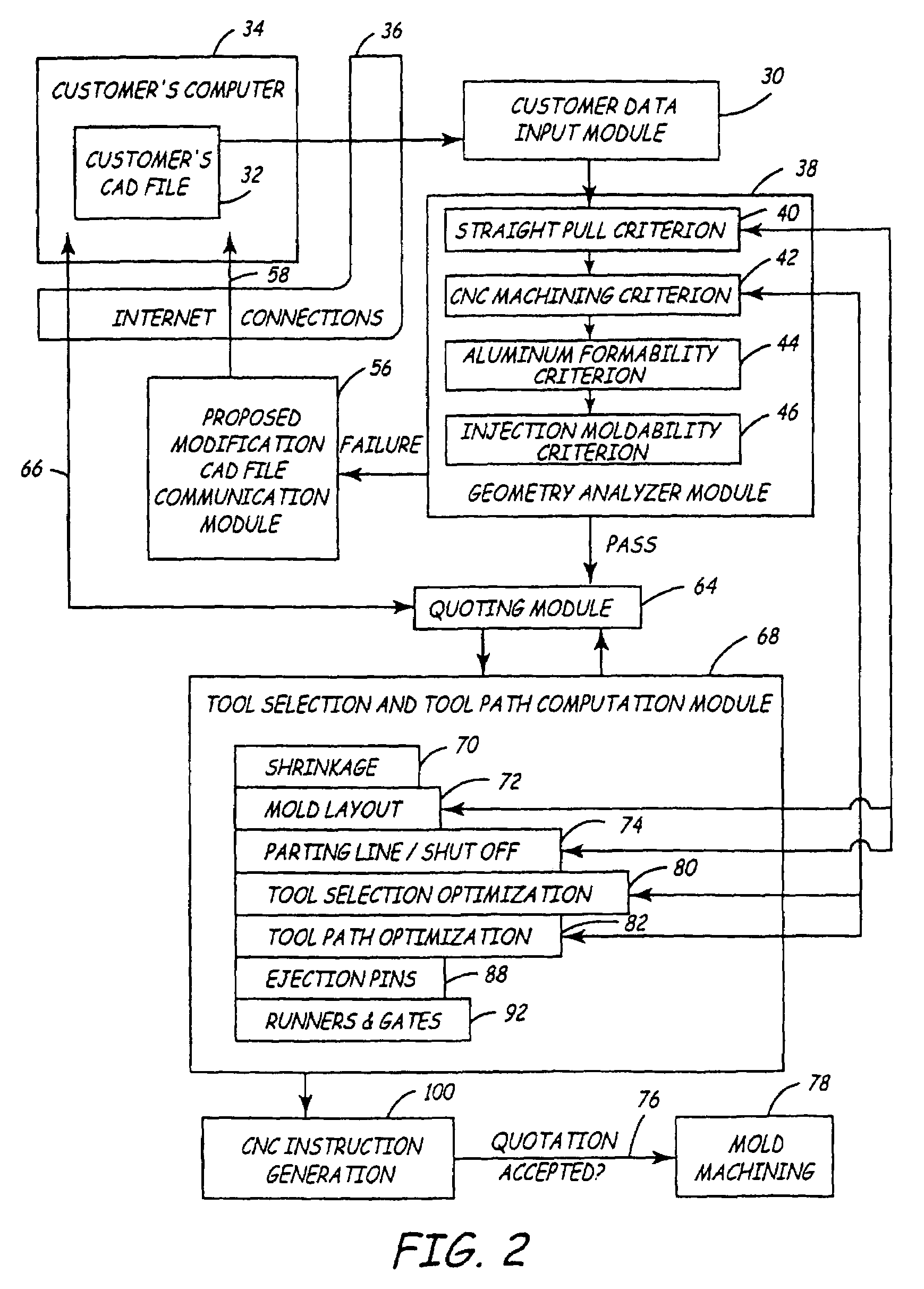Automated quoting of molds and molded parts
a technology of automatic quoting and molds, applied in the field of mold manufacturing, can solve the problems of significant time delay, inability to manually control machining operations, and high cost of obtaining the desired injection mold
- Summary
- Abstract
- Description
- Claims
- Application Information
AI Technical Summary
Benefits of technology
Problems solved by technology
Method used
Image
Examples
Embodiment Construction
[0027]The present invention will be described with reference to an exemplary part 10 shown in FIG. 1. FIG. 1 represents a “cam” part 10 designed by the customer. In part because the cam 10 is custom-designed (i.e., not a staple article of commerce) by or for this particular customer, the cam 10 includes numerous features, none of which have commonly accepted names. For purposes of discussion, we will give names to several of these features, including a part outline flange 12, a circular opening 14 with two rotation pins 16, a non-circular opening 18, a notch 20, a rib 22, a 60° corner hole 24, a 30° corner hole 26, and a partial web 28. However, workers skilled in the art will appreciate that the customer may in fact have no name or may have a very different name for any of these features.
[0028]FIG. 2 is a flow chart showing how the present invention is used to manufacture the customer's part. The first step involves a Customer Data Input module 30. Thus, the starting input for the ...
PUM
| Property | Measurement | Unit |
|---|---|---|
| draft angles | aaaaa | aaaaa |
| cutting depth | aaaaa | aaaaa |
| height | aaaaa | aaaaa |
Abstract
Description
Claims
Application Information
 Login to View More
Login to View More - R&D
- Intellectual Property
- Life Sciences
- Materials
- Tech Scout
- Unparalleled Data Quality
- Higher Quality Content
- 60% Fewer Hallucinations
Browse by: Latest US Patents, China's latest patents, Technical Efficacy Thesaurus, Application Domain, Technology Topic, Popular Technical Reports.
© 2025 PatSnap. All rights reserved.Legal|Privacy policy|Modern Slavery Act Transparency Statement|Sitemap|About US| Contact US: help@patsnap.com



